Η θυσία των αγοριών-λουλουδιών – The sacrifice of boy- flowers
Αγόρια λουλούδια
Ισημερία, Ευαγγελισμός, του Λαζάρου, Πάσχα, όλα σχετικά με την Άνοιξη, το άνοιγμα της φύσης που αντιπροσωπεύεται από τον καταπράσινο Απρίλη, τον πράσινο μήνα της Αφροδίτης, εφέτος συνέπεσαν πολύ κοντά, στη σειρά.
Τα “xromata.com” δράττοντας την ευκαιρία, θα κάνουν ένα μικρό χρωματικό αφιέρωμα, βασιζόμενα στο χρώμα κάποιων λουλουδιών που συνδέονται με τις ανάλογες παραδόσεις, κάτω από τον τίτλο:
«Τα αγόρια λουλούδια».
Οι παραδόσεις αυτές έχουν να κάνουν με μια απαραίτητη «θυσία» για την αναγέννηση της φύσης, αλλά κυρίως για την αναγέννηση και ανέλιξη του «ανθρώπου».
Η θυσία αυτή, στη φύση είναι πασιφανής. Ο σπόρος πρέπει να πεθάνει για να βλαστήσει και να επιφέρει μια νέα καρποφορία.
Αναλογικά, συμβολικά, κάποιο «εκλεκτό» αγόρι –νεαρός άνδρας- πρέπει να θυσιαστεί και με τη θυσία του να οδηγήσει την ανθρωπότητα σε ένα νέο, ανώτερο, κύκλο.
Συνήθως, κατά τις παραδόσεις το αίμα του θυσιαζόμενου νεαρού βάφει –κυρίως- κόκκινο ένα ταπεινό αγρολούλουδο που έτυχε να βρίσκεται εκεί πλησίον και που ως τότε –πάντα κατά την παράδοση- ήταν άσπρο.
Οι θυσίες αυτές χάνονται στις απαρχές της μυθολογίας και φθάνουν έως τον Χριστιανισμό.
Κατά την Μαίρη Ρενώ και τον Ρόμπερτ Γκρέηβς, στις πρώιμες κοινωνίες της μητριαρχίας, ο εκλεκτός νεαρός ζούσε για ένα διάστημα με τιμές σαν βασιλικός σύζυγος στο πλάι της βασίλισσας, την οποία γονιμοποιούσε (και όχι μόνο αυτήν) έως ότου θυσιαστεί και κατασπαραχθεί, ενώ με το αίμα του ράντιζαν τη γη σαν ευλογία για πλούσια καρποφορία.
Στην άκρη της μυθολογίας, εκεί κάπου προς την Κρήτη, χάνονται οι λεπτομέρειες του πρώτου ανάλογου μύθου, του Ανθέα, ο οποίος παραδίδει τη σκυτάλη και το όνομά του (σαν επωνυμία, όταν λατρευόταν σαν θεός των λουλουδιών και της άνοιξης) στον πρώτο Διόνυσο, τον Ζαγρέα, ο οποίος διαμελίστηκε από τους Τιτάνες. Στις δυο αυτές περιπτώσεις δεν αναφέρεται κάποιο λουλούδι να συνδέεται με τη θυσία. Τα λουλούδια εμφανίζονται καθώς οι ανάλογοι μύθοι της «θυσίας» ταξιδεύουν βορειότερα και προς τα ανατολικά.
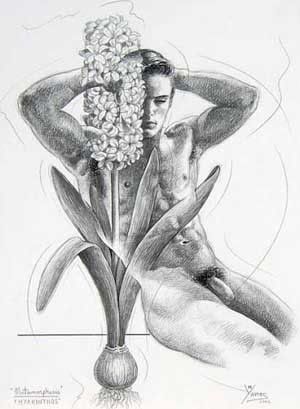 Έτσι λοιπόν, στη Λακωνία έχομε το θάνατο του Υάκινθου από το αίμα του
Έτσι λοιπόν, στη Λακωνία έχομε το θάνατο του Υάκινθου από το αίμα του οποίου φύτρωσε το ομώνυμο λουλούδι (το οποίο όμως δεν ήταν κόκκινο αλλά βιολετί*).
οποίου φύτρωσε το ομώνυμο λουλούδι (το οποίο όμως δεν ήταν κόκκινο αλλά βιολετί*).
*Αργότερα, όταν ασχοληθούμε με την εννοιολογική ανάπτυξη των χρωμάτων, θα γίνει κατανοητή η ταύτιση, σε πρώιμες εποχές, του κόκκινου χρώματος με το πορτοκαλί, το βαθυκίτρινο αλλά και το μωβ.
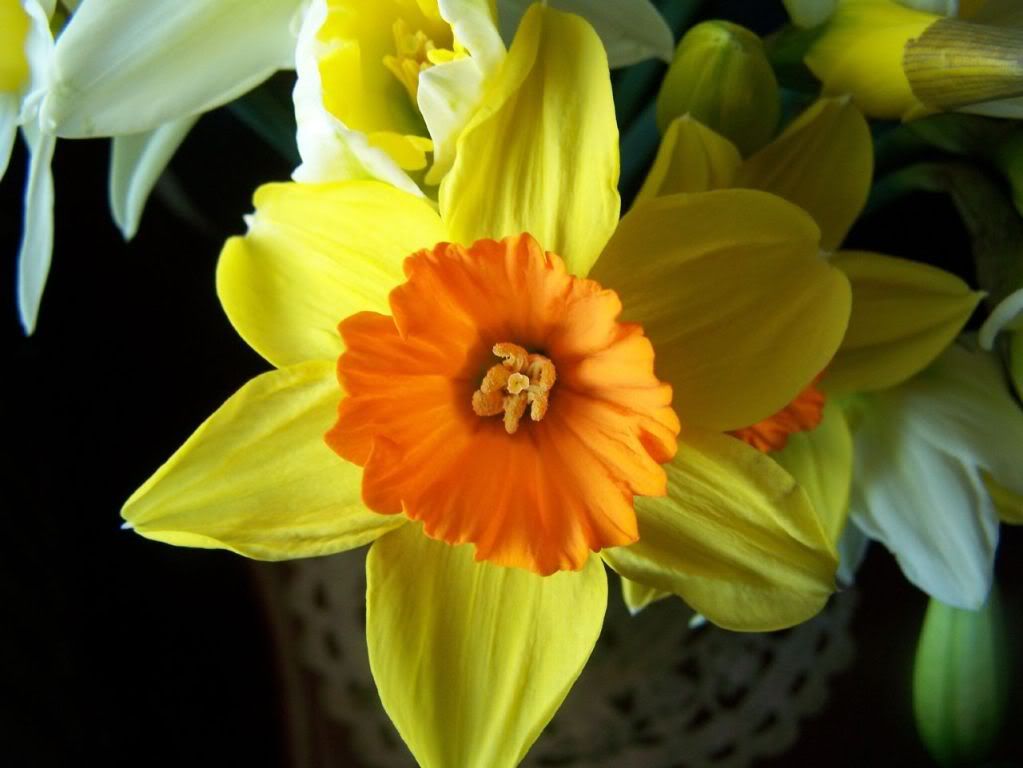 Ανεβαίνοντας βορειότερα, στη Θεσσαλία, τη σκυτάλη παραλαμβάνει ο Νάρκισσος, από το αίμα του οποίου βάφτηκε η χοάνη του ομώνυμου λουλουδιού.
Ανεβαίνοντας βορειότερα, στη Θεσσαλία, τη σκυτάλη παραλαμβάνει ο Νάρκισσος, από το αίμα του οποίου βάφτηκε η χοάνη του ομώνυμου λουλουδιού. 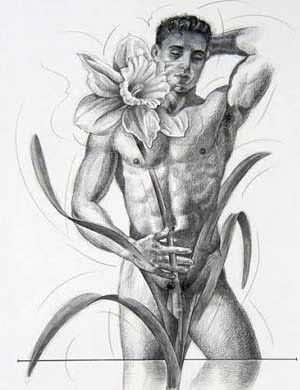
Ο νάρκισσος εμφανίζεται και στην αρπαγή της Περσεφόνης, αφού ήταν το λουλούδι που έσκυψε να κόψει τη στιγμή που ξεπετάχτηκε μέσα από τη γη ο Πλούτωνας και την έκλεψε.
Ανατολικά τώρα, το χρέος της θυσίας, αναλαμβάνουν ο Άττυς, στην Μικρά Ασία και ο Άδωνις στην ανατολική λεκάνη της Μεσογείου.
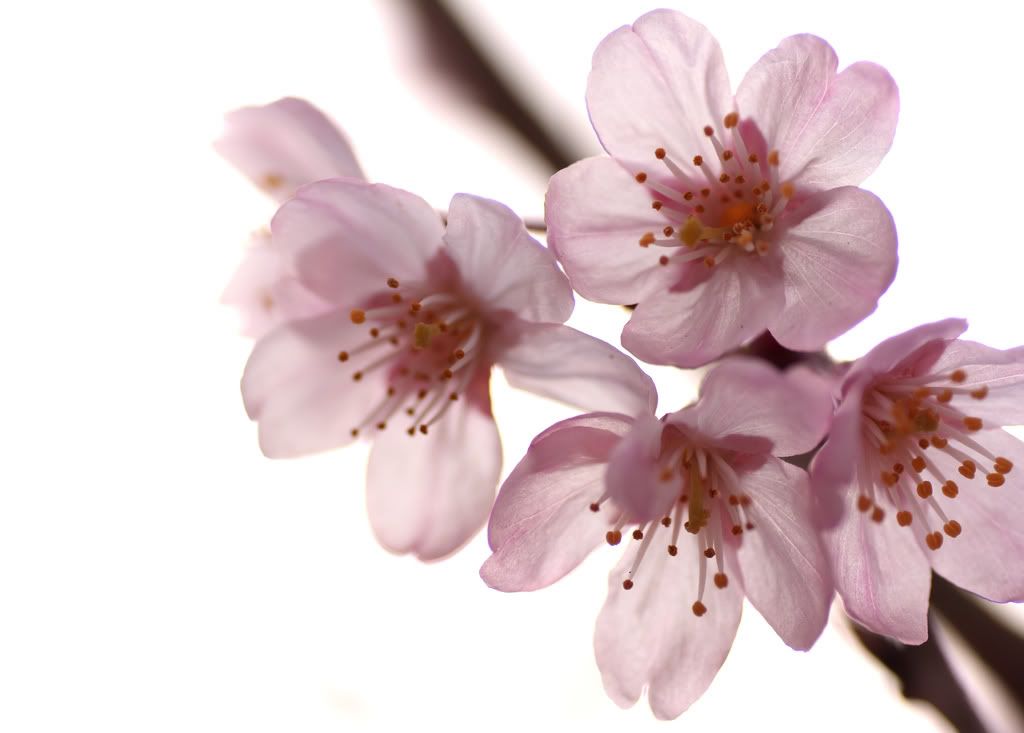 Ο Άττυς σχετίζεται με τους ροζ ανθούς της αμυγδαλιάς, ενώ στο μέρος που η θεά Κυβέλη έθαψε τα ακρωτηριασμένα γεννητικά του όργανα, φύτρωσαν ία (νάτο πάλι το μωβ χρώμα).
Ο Άττυς σχετίζεται με τους ροζ ανθούς της αμυγδαλιάς, ενώ στο μέρος που η θεά Κυβέλη έθαψε τα ακρωτηριασμένα γεννητικά του όργανα, φύτρωσαν ία (νάτο πάλι το μωβ χρώμα).
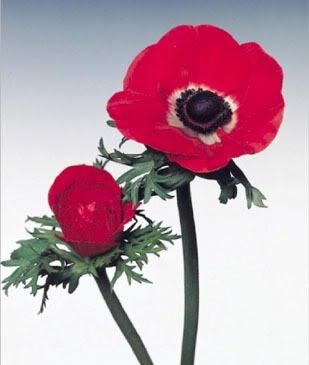 Με τον Άδωνη συνδέονται οι ανεμώνες αφού βάφτηκαν κόκκινες από το αίμα του.
Με τον Άδωνη συνδέονται οι ανεμώνες αφού βάφτηκαν κόκκινες από το αίμα του.  Τα μέχρι τότε άσπρα τριαντάφυλλα έγιναν κόκκινα από το αίμα της Αφροδίτης, που μόλις έμαθε τον σκοτωμό του αγαπημένου της, έτρεξε ξυπόλυτη στο σημείο του θανάτου του, σκίζοντας τα πόδια της στα αγκάθια των τριανταφυλλιών που υπήρχαν εκεί γύρω.
Τα μέχρι τότε άσπρα τριαντάφυλλα έγιναν κόκκινα από το αίμα της Αφροδίτης, που μόλις έμαθε τον σκοτωμό του αγαπημένου της, έτρεξε ξυπόλυτη στο σημείο του θανάτου του, σκίζοντας τα πόδια της στα αγκάθια των τριανταφυλλιών που υπήρχαν εκεί γύρω.
Οι τελετές και τα δρώμενα των Αδωνείων Μυστηρίων μεταβιβάστηκαν (ελάχιστα παραλλαγμένα) στην Εβδομάδα των Παθών.
Κατά την παράδοση, στη βάση του Σταυρού ήταν φυτρωμένη μια λευκή (έως τότε) παπαρούνα (κατ’ άλλους ανεμώνη) που βάφτηκε κόκκινη από το αίμα που κύλησε από την πληγή του Θεανθρώπου των Χριστιανών.
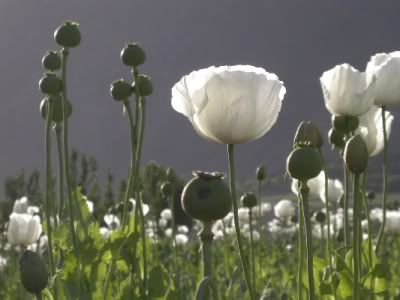
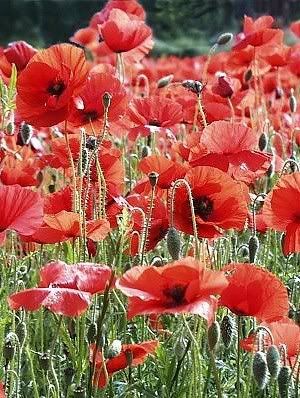

«Ο ίδιος μύθος του θνήσκοντος νέου άνδρα που “σπείρεται εν φθορά και εγείρεται εν αφθαρσία”, που ανασταίνεται ανανεώνοντας την ελπίδα και ενδυναμώνοντας τις ζωτικές δυνάμεις, υπόκειται και στον εθιμικό κύκλο του Λαζάρου, με μεγάλη εξάπλωση στον νοτιοβαλκανικό χώρο» είχε γράψει η λαογράφος Μιράντα Τερζοπούλου. Το ίδιο και στην Κύπρο.
Οι «Λαζαρίτικοι αγερμοί», οι «Λαζαρίνες» και το «παιδί φουσκοδέντρι» ήταν κάποια από τα έθιμα που επικρατούσαν μέχρι πριν λίγες δεκαετίες, το Σάββατο του Λαζάρου. Δεν γνωρίζω εάν διατηρούνται ακόμα σε κάποια μέρη της Κύπρου και της Ελλάδας.
Translated into English
The sacrifice of boy – flowers.
The boy – Flowers.
Equinox, Annunciation, Lazarus’ resurrection, Easter, spring, the opening of nature represented by the green color in April, the green month of Venus, this year coincided very closely, in a row.
"xromata.com" grasps the opportunity to do a little color tribute, based on the color of some flowers associated with the appropriate traditions, under the title:
"The boy – flowers”.
These traditions have to do with a necessary "sacrifice" for the rebirth of nature, but mainly for the revival and advancement of ‘humanity’.
This sacrifice is obvious in nature. Seed must die in order to germinate and give a new bearing.
For the same reason, proportionally, symbolically, a ‘fine’ boy –young man- had to be sacrificed thus leading by his sacrifice humanity into a new, upper circle of evolution.
Usually, on traditions the sacrificial blood stains -especially red- a humble country flower who happened to be there in the vicinity and who mostly until then, always according to tradition, was white.
The traces of such sacrifices are lost in the beginnings of mythology and reach up to Christianity.
According to Mary Renault and Robert Graves in early societies of matriarchy, the selected young man lived for a time with honors as royal husband on Queen’s side, whom fertilized (and not only her) until he sacrificed and was slain, while his blood spatter on earth as a blessing for rich fruition.
At the edge of mythology, somewhere in the island of Crete, are lost the first details of a similar myth of flower boy Antheus (his name means “flower), who delivered the baton and his name (like a title name, when he worshiped as a god of flowers and spring) to the first Dionysus, Dionysus Zagreus, who was torn apart by the Titans. In both those cases there is no reference to a flower associated with the sacrifice. The flowers appear on similar newer myths of "sacrifice" that traveled up north and to the east.
So we have in Laconia (Sparta) Hyacinth’s death that from his blood sprouted the homonym called flower (which were not red but violet*).
* Later, when we deal with the conceptual development of color terms, we’ll understand the identity, in early times, of red color to orange, saffron and purple – violet.
Going north, to Thessaly, the baton receives Narcissus, from whose blood stained the funnel of the homonymous flower.
Narcissus flower appears as well, in the abduction of Persephone, as it was the flower she leaned over to cut it the time that sprang from the earth Pluto (the god of Hades) and abducted her.
Now towards East the debt of sacrifice was undertaken by Attys, in Asia Minor and Adonis in the eastern Mediterranean region.
Attys associated with the pink blossoms of almond, and in the place where were buried his mutilated genitals by goddess Cybele, sprouted violets (once again the purple – violet color).
Adonis is connected with anemones since they were painted red by his blood.
The previously white roses became red by the blood of Venus, who just when she was informed about the death of her beloved, she ran barefoot to the point of his death and her legs were torn by the thorns of roses that were around there.
The ceremonies and events of Adonis’ Mysteries passed (a little bit changed) in the Passion Week.
According to tradition, on the basis of the Cross there was a white (by then) poppy (by others it was an anemone) that was colored red from the blood that went down from the wounds of the God – Son of Christians.
"The same myth of dying young man who "wear and sown in raised in incorruption" that resurrects the hope of renewing and strengthening the vital forces is the subject to customary round of Lazarus, spread largely in South Balkan and Cyprus" was written by folklorist Miranda Terzopoulos.
The "Lazaritikoi agermoi “(the wakening of Lazarus), the “Lazarines" (The Lazarus girls) and the "child fouskodentri" (the blown tree kid) were some of the customs that prevailed until a few decades on Lazarus Saturday. I do not know if they are kept yet in some parts of Cyprus and Greece.
admin is | Topic: Uncategorized | Tags: Άδωνις, αίμα, Ανθεύς, άνοιξη, Άττυς, Αφροδίτη, Διόνυσος Ζαγρεύς, κόκκινο, Κυβέλη, λουλούδι, μυθολογία, μωβ, Νάρκισσος, Περσεφόνη, ροζ, Υάκινθος, φύση, Χριστός
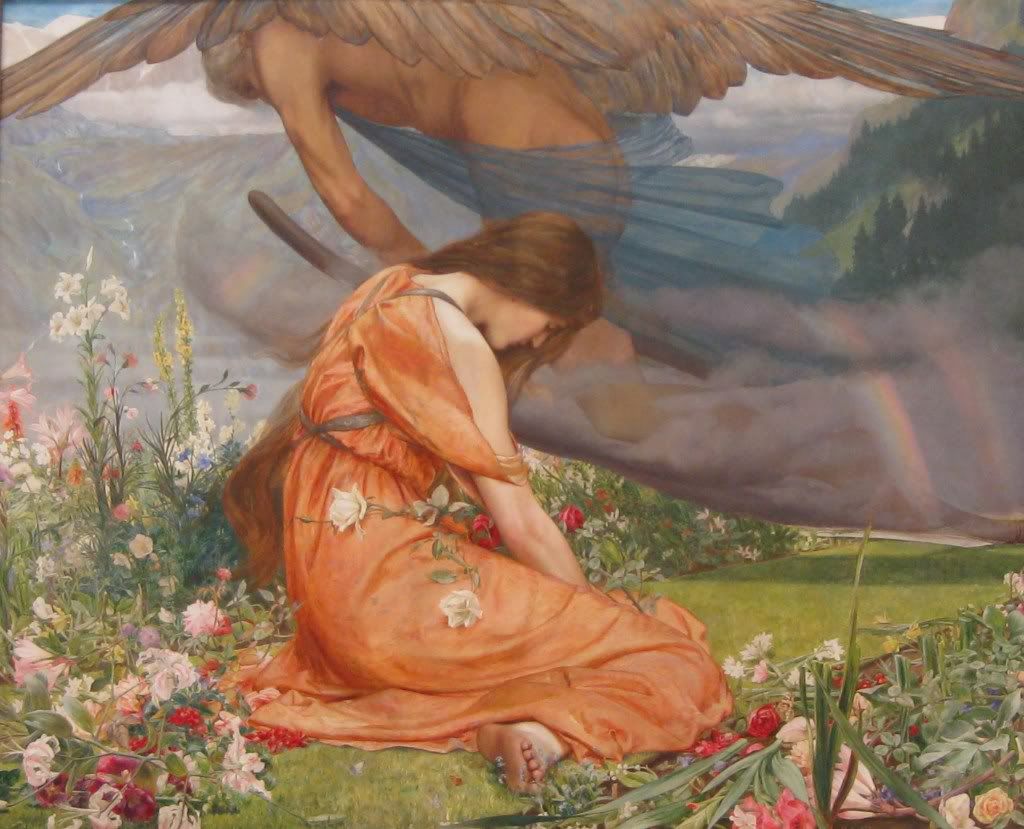

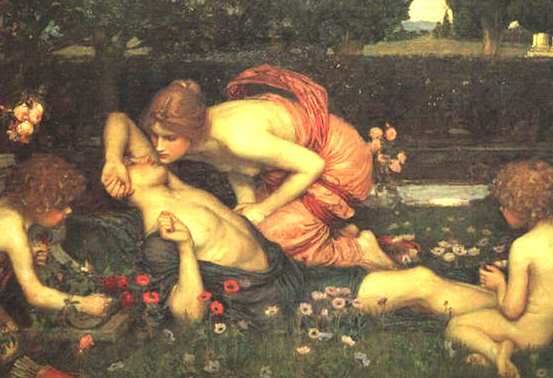


One Comment, Comment or Ping
Corfu Pelekas
Very efficiently written post. It will be beneficial to anybody who utilizes it, including yours truly :). Keep doing what you are doing – looking forward to more posts.
31-4-11
Reply to “Η θυσία των αγοριών-λουλουδιών – The sacrifice of boy- flowers”